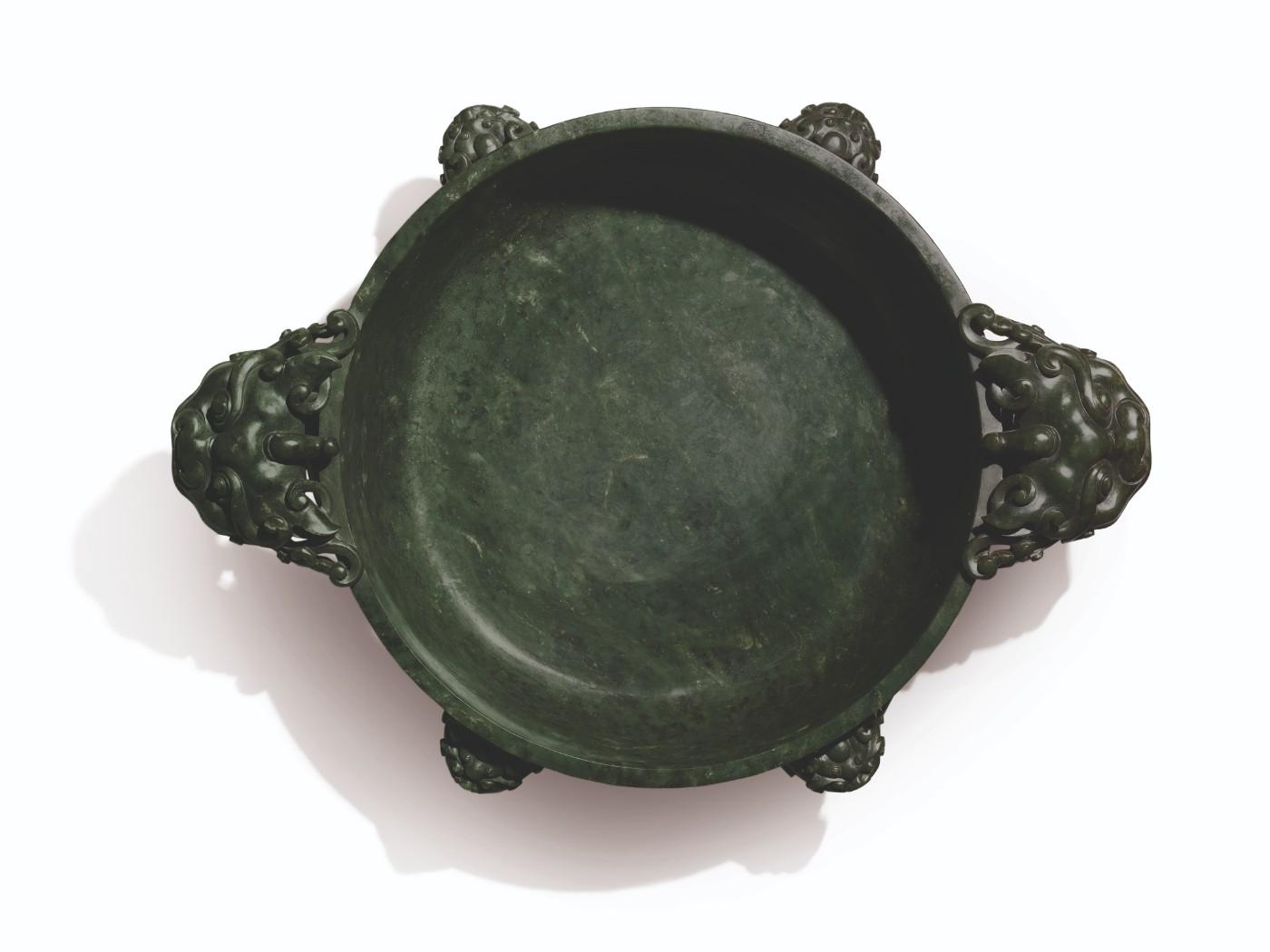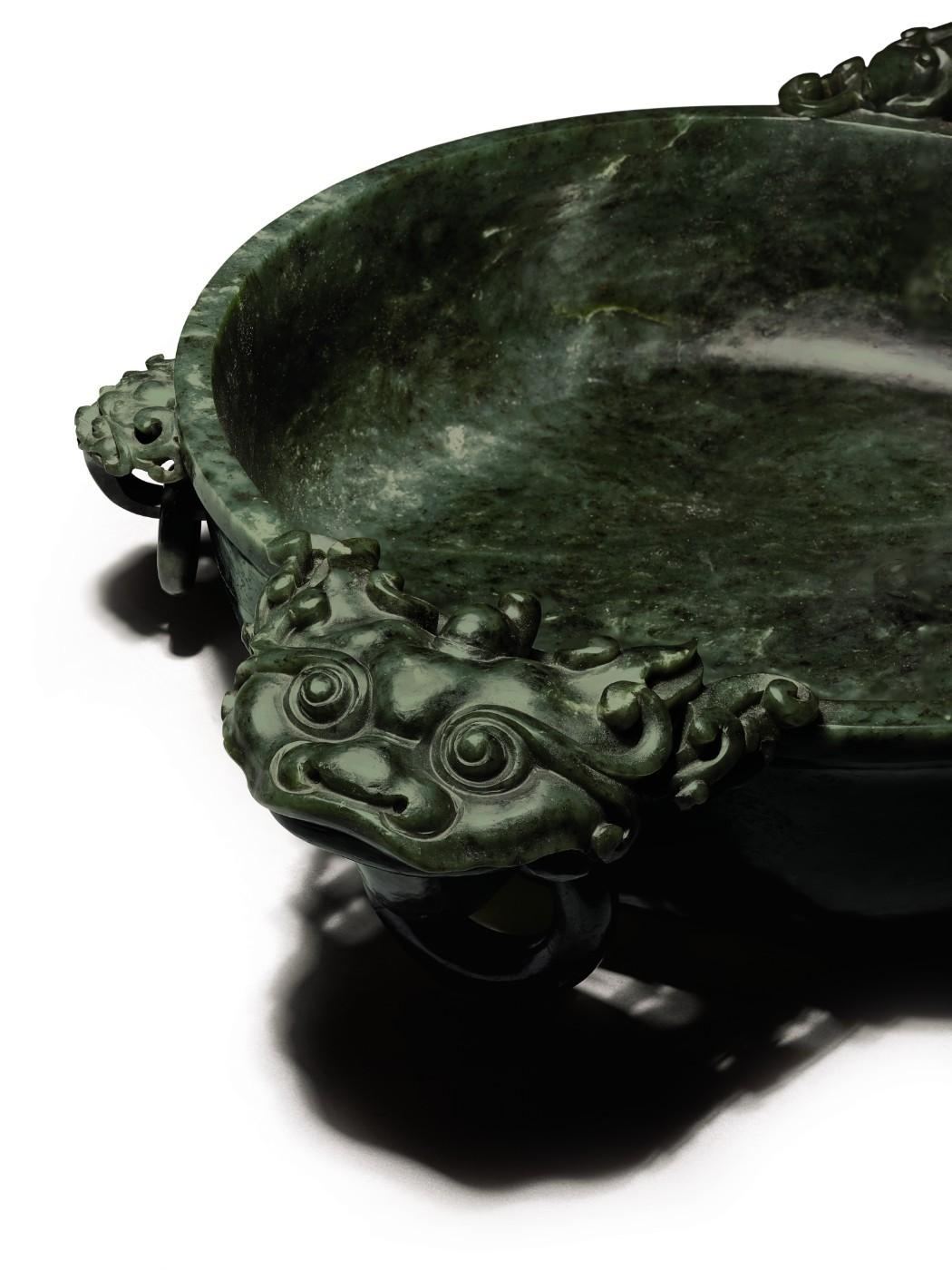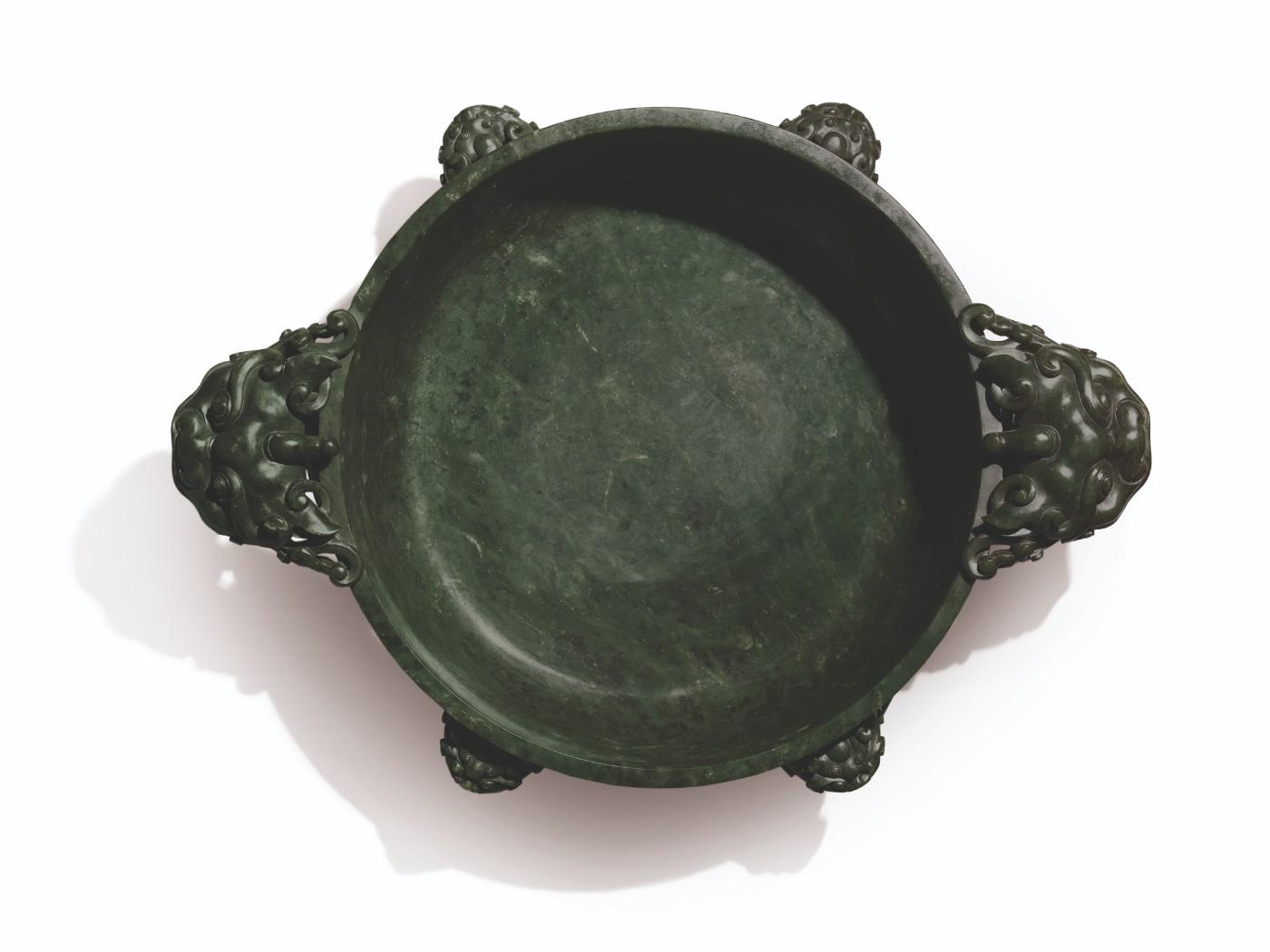Carved with two large beast-head handles and four further smaller handles with freely-moving rings, the basin embodies the distinctive qualities of mid-Qing imperial jade. Measuring 50 cm in width at its widest point and 12.8 cm in height, the vessel is carved from Khotan jade, a material which was, and remains, both highly prized and beloved in Chinese culture. The jade has an extremely rich lustre, one of the distinct characteristics of spinach-green jade harvested from the Khotan region by the imperial court.
Since jade is not so much carved as subtracted and ground away, the washer can be considered one of the highest technical accomplishments of the Golden Age of Qing dynasty jade. Vessels of any form, of the size of this piece, are virtually unknown, and this washer is remarkable because of its sheer size and exceedingly rare because of its six freely moveable rings suspended from animal masks. Such a feat makes this a unique piece and marks a pinnacle of imperial craftsmanship. Created under the auspices of the Emperor himself, the primary purpose of the washer would have been for display and aesthetic appreciation.
Henry Howard-Sneyd, Sotheby's Chairman of Asian Art, Europe and Americas, said: “This extraordinary washer has been in the same English collection since the 19th century, it has been published in one of the most famous books on jade, and it has been shown in the great exhibition at the Royal Academy in London in the 1930s, so it has a history, but since 1936 it has not been seen in public so it’s a discovery as well. This piece really ticks all the boxes that a major collector would want.”































